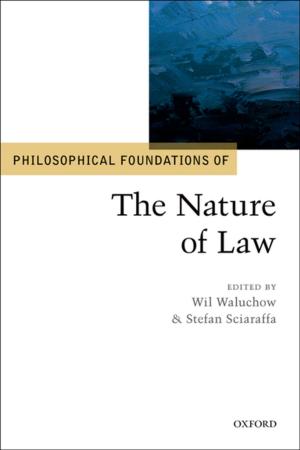Images of Time
Mind, Science, Reality
Nonfiction, Science & Nature, Science, Physics, Relativity, Other Sciences, Philosophy & Social Aspects| Author: | George Jaroszkiewicz | ISBN: | 9780191075681 |
| Publisher: | OUP Oxford | Publication: | January 21, 2016 |
| Imprint: | OUP Oxford | Language: | English |
| Author: | George Jaroszkiewicz |
| ISBN: | 9780191075681 |
| Publisher: | OUP Oxford |
| Publication: | January 21, 2016 |
| Imprint: | OUP Oxford |
| Language: | English |
Have you ever wondered about Time: what it is or how to discuss it? If you have, then you may have been bewildered by the many different views and opinions in many diverse fields to be found, such as physics, mathematics, philosophy, religion, history, and science fiction novels and films. This book will help you unravel fact from fiction. It provides a broad survey of many of these views, these images of time, covering historical, cultural, philosophical, biological, mathematical and physical images of time, including classical and quantum mechanics, special and general relativity and cosmology. This book gives you more than just a review of such images. It provides the reader a basis for judging the scientific soundness of these various images. It develops the reader's critical ability to distinguish Images of Time in terms of its contextual completeness. Differentiating between metaphysical images (which cannot be scientifically validated) and those that could, in principle, be put to empirical test. Showing that mathematical and classical mechanical images are more complete, and genuine quantum mechanics based images have the greatest degree of contextual completeness. Through the use of a simple algorithm, the reader can decide the classification of any of the images of time discussed in this book. These distinctions are of particular importance in this day and age, when we are flooded by a plethora of competing Images of Time. Many of these have no scientific basis or empirical support or content. This book will be of value not only to philosophers, scientists and students, but also to the general reader interested in this fundamental topic, because it introduces a method of distinguishing between science fiction and science fact.
Have you ever wondered about Time: what it is or how to discuss it? If you have, then you may have been bewildered by the many different views and opinions in many diverse fields to be found, such as physics, mathematics, philosophy, religion, history, and science fiction novels and films. This book will help you unravel fact from fiction. It provides a broad survey of many of these views, these images of time, covering historical, cultural, philosophical, biological, mathematical and physical images of time, including classical and quantum mechanics, special and general relativity and cosmology. This book gives you more than just a review of such images. It provides the reader a basis for judging the scientific soundness of these various images. It develops the reader's critical ability to distinguish Images of Time in terms of its contextual completeness. Differentiating between metaphysical images (which cannot be scientifically validated) and those that could, in principle, be put to empirical test. Showing that mathematical and classical mechanical images are more complete, and genuine quantum mechanics based images have the greatest degree of contextual completeness. Through the use of a simple algorithm, the reader can decide the classification of any of the images of time discussed in this book. These distinctions are of particular importance in this day and age, when we are flooded by a plethora of competing Images of Time. Many of these have no scientific basis or empirical support or content. This book will be of value not only to philosophers, scientists and students, but also to the general reader interested in this fundamental topic, because it introduces a method of distinguishing between science fiction and science fact.















